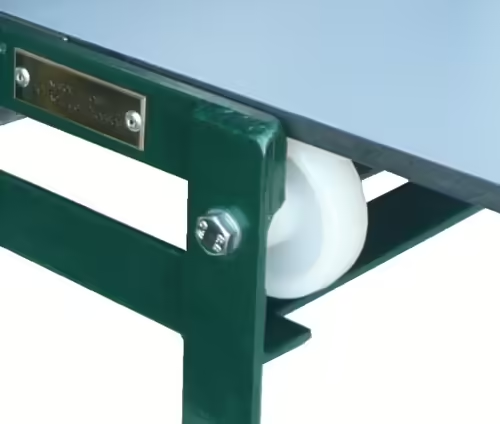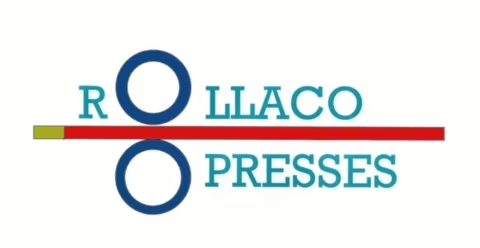This guide to choosing a press is to help understand the complexities of a modern etching press. Many people when choosing a press use bed size/price ratio, in short they want the biggest bed for the cheapest price.
This is a big mistake. They don’t factor in the press specifications which ultimately are the very thing they will need from a press, these are the gears, roller sizes, bed supports, bed material, drive handles, in fact the whole design and quality of the press. Some presses may look similar and purport to be similar, they are not.
Choosing a press –Gears & Handles
A good guide to choosing a press if you intend to do etching and collographs where higher pressures are required is to consider gears . As the bed width gets wider it is more difficult to print on a direct drive model. Gears eliminate this and provide a smoother action through the rollers. This is important when choosing a press
Gears are described as a ratio. The higher the ratio the better ie., 12:1 is better then 4:1. In simple terms 12:1 is twelve times easier to use than direct drive and 4:1 is four times easier to use than direct drive.
Presses with a simple crank handle can be used with one hand. A star wheel requires two hands for operation. Star wheel are better when you can remove the spokes for transportation. Rimwheels are the another option combining both aspects of the crank handle and the star wheel and looking good to boot.
Geared presses don’t damage plates. Whether geared or direct drive the same pressure is applied to produce the print. The geared press does it easier. Some ‘Artist Manufactures’ have been known to make these claims. They may need a lesson in Physics.
Choosing a press – Rollers
The rule for rollers is, the larger diameter the better. This helps smooth out point loading. There is a point when the diameter advantage is negligible. For example it would be impossible for anyone to tell the difference in prints produced from a 4.5″ dia top roller to a 10″ dia top roller. If the press has a high gear it disguises the effort in producing the print.
Recommended minimum roller size for bench models is, 75mm dia bottom roller, 85mm dia top roller.
On an etching press prefabricated rollers are a better engineering option than solid rollers which only provides excessive weigh with no engineering benefit. People who disagree with that statement will have no engineering qualifications, knowledge or skills. Prefabricated rollers are used extensively in Industry to support this principal.
Bare metal rollers used in the home or studio present no problems, but if used in a damp environment (garden sheds) will need extra protection such as water dispersant (WD40) and covered with a cling film when unused for long periods. Rollaco now provides stainless steel rollers as an option to eliminate this problem.
Choosing a press – Beds
An important guide when choosing an etching press is the bed. Heavy steel beds for use in schools can be a liability, which is why some companies use thin steel beds. This can cause the beds to curl . Wooden beds maybe unsuitable for the large compressive stresses generated by etching, drypoint and collograph work and may need replacing often. Modern composite beds are a tried and tested material for over 40 years. The bed material is light, strong, inert to chemical attack and is dimensionally stable under pressure. This material costs considerably more than steel beds. All beds should be fitted with safety stops.
Top Roller Guides
It is very important that the top roller runs smoothly within its guides and without excessive play. The term play is used in engineering to describe movement. The top roller should not move in the plane /direction of the bed. Excessive play will cause problems in printing . The problem occurs when the pressure comes off the plate and causes the top roller to jump which sometimes leaves marks at the edge of the print. An good press should have no movement on the top roller. A small amount of lateral movement at right angles to the bed is ok. This allows the adjusters to be moved independently without jamming.
Bed Support
It is important when choosing a press that the bed is supported in a stable condition when extended. This allows the artist to work comfortably. Rollaco Presses has support rollers both sides and both ends, ensuring a safe working surface.

Press materials
Cast iron was widely in the 19th century but soon found it had limitations especially when used where combination stresses where involved. Simply put, in mechanics there are three types of stresses, Compressive, Tensile and Shear . They are all present when an etching press is operating. Cast iron is not a strong material when under Tensile or Shear stress, the very stresses developed while printing. Cast iron is strong against Compressive stress which is only present on the bed.
This is ok but the down side is, presses have to be much heavier than necessary to compensate for a weak material.
In a nutshell building a etching press from cast iron gives you a pretty press that’s pretty heavy. I suggest when choosing a press , look for the modern materials which encompass both lightness and strength.
The future for etching presses is carbon; it is the material for tomorrow. as a replacement for steel. It is already happening in the aerospace industry with the new Boeing airliner built entirely of carbon fibre. Future nano tube technology will produce a carbon material up to a thousand times stronger than steel. Do you really think early Victorian engineers would not have used it if it had been available to them?
Fact : Pound for pound steel is stronger than cast iron but not as strong as silk.
Press parts
What is important is that parts used are of a suitable quality. The use of brass bearings instead of the modern ball bearing units is a no contest. Brass bearings are ok on a etching press where slow movement occurs. Brass bearings have to be lubricated occaisionally. Ball bearings are pre-packed with grease for life and require no maintenance. Remember an important guide when choosing a press, is not to have one that comes with an oil can. Without ball bearings no vehicle that depends on wheels could operate. Wheel-barrows are ok.
Press Design
Machines with the springs fitted under the roller bearings are ok , the spring assists lifting the top roller and does not interfere with the quality of the print. Rollaco Etching presses rely on a design were the roller can be moved easily.
For Safety all presses should have gears enclosed and stops fitted to the beds, to prevent accidents.
It is beneficial to be able to lift the top roller of the press to preferably type high at least. There is no significant gain in using top roller or bottom roller drives they are both roughly equal. Rollaco uses a top roller drive for its spoked small presses , this is allows the press to sit on a surface without a overhang for the spokes.
Construction of the press is very important , if pictures of the press make it look flimsy, it probably is but as a guide presses with beds wider than 40cm (16”) should not weigh less than 40kgs. These are not etching presses, they may be capable of some relief work but if used for etching, drypoint and collographs, they will probably fail. Also avoid any presses with any of the rollers less than 75mm (3”) diameter .
Press Adjustment
Many artists can get anxious over adjustments to the top roller or setting of the pressure for various types of printing. This should never be a problem, prints themselves tell you where the pressure needs increasing. Micrometers and Vernier scales fitted to presses can be confusing . Micrometers and vernier callipers are tools of the Engineer, indeed it is what I use to make presses. Rollaco has introduced a simple method of setting up the top roller using an indexable handle.This is called innovation, its what drives all progress.
Traditional vs. Modern
When choosing a press it often falls into two camps, those that believe presses should be either traditional or modern. Traditional in my view represents, old inefficient, hard to use, inflexible, hard to move, very expensive, nice looking presses. Look at the old Columbian type pinch presses, beautiful ,great for lino, typeface, weigh in at two tons and they can’t do an etching but traditional. Traditional means using the materials at hand for any given era not the best materials.
Traditional as applied to a motor car would be a Model T Ford, okay if that is what you want.
Modern would be the opposite to the above ,efficient ,easy to use, relatively portable, inexpensive, maybe not great looking.
Prints from a modern, well designed built press, are equal to a traditional press.
By now you will know which camp I belong. I do like old things like art deco wristwatches, things made for function and beauty but I have to accept they don’t keep perfect time and need lots of attention, like remembering to wind them.
Load Rating
A good guide for choosing a press is to ask questions about the press. Ask the load rating for the press. If they cannot tell you, avoid it.
Be wary of companies claiming to have been making presses for long periods, this can be a ploy to give credibility. I have witnessed many here today gone tomorrow merchants over the genuine 45 years I have been making presses leaving artists with poorly made presses and no backup.
In my experience well designed presses prove to be no problem as long as the operator is competent. All presses should have a load rating which allows a factor of safety for the press. Always make sure when using your press you only apply the pressure necessary to produce a print. Extra pressure stresses all presses which can eventually results in failure or damage.
In this guide to choosing a press I have tried to assist in plain language how to choose your press and I hope it has been of assistance.
Rollaco Presses invites any questions technical or otherwise about its presses.
John Pears. www.rollacopresses.co.uk
I am a trained craftsman and engineer with 60 years experience. I have worked in a wide range of industries and those years I designed, built, repaired a whole range of different types of machines and that experience is my CV.
